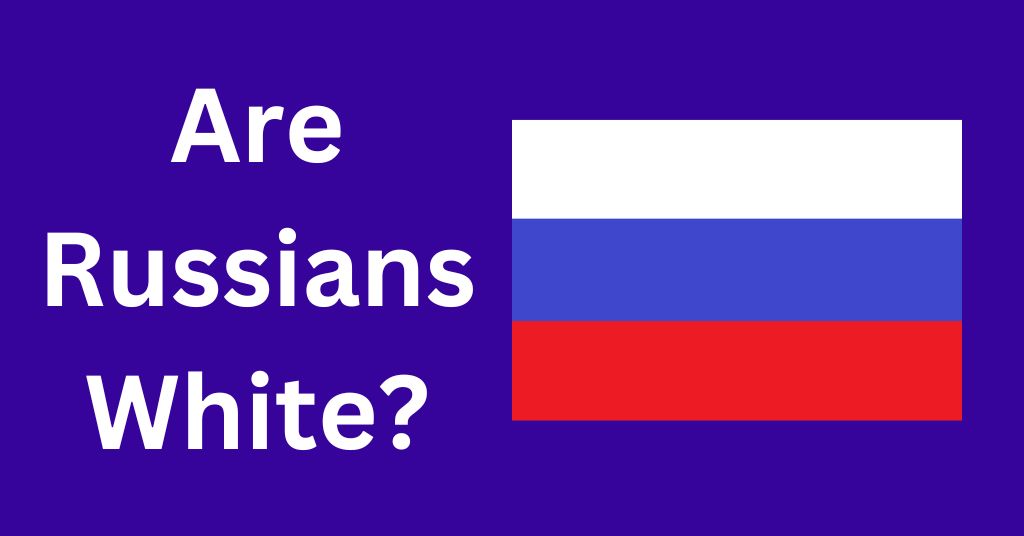Yes, a significant part of the Russian population is white. Russians are predominantly of European descent and are considered white or Caucasian.
The Russian Federation is a transcontinental country covering Eastern Europe and Northern Asia. It happens to be the largest country in the world, with one of the world’s largest armies at its disposal.
But are Russians considered white people? Do they have different ethnic groups? If so, what is their ancestry?
If you happen to be a history buff who is interested to know more about the racial and ethnic groups of Russia, then this is the article for you. People generalize the diversity of Russians, and I am writing this article to provide you with a broader perspective.
Can Russians Be Called White People?

Yes, Russians can be called white people though the locals do not generalize themselves based on this race category. Racial categories are socially constructed and can vary across different nations and cultures.
Russia is a multiethnic and multicultural country with many different ethnic groups and nationalities, some of whom may not be of European descent. The term “White” can not refer to just a person’s skin color.
Assuming the US definition of race, Russia’s population is approximately 75% white.
The biggest ethnolinguistic group in Europe comprises the Slavs, who communicate through various Slavic languages that are part of the more prominent Indo-European language family’s Balto-Slavic branch.
Originating from Eastern Europe, the Russians belong to the East Slavic ethnic group and have a common Russian heritage, culture, and history. They communicate mainly in Russian, the most widely spoken language among the Slavic languages and the native tongue of the Russian people.
What Is The Race And Ethnicity Of Russians?
Most Russians are considered ethnically Slavic, with ethnic Russians comprising about 80% of the population. Other ethnic groups in Russia include Tatars, Ukrainians, Bashkirs, Chuvash, Chechens, Armenians, Avars, and many others.
Here’s a table on some of the different ethnic groups and their estimated populations in Russia, based on the 2010 Russian Census.
| Ethnic Group | Population | Percentage Of Total Population |
| Ethnic Russians | 111,016,896 | 80.9% |
| Tartars | 5,310,649 | 3.9% |
| Ukrainians | 1,927,988 | 1.4% |
| Bashkirs | 1,584,554 | 1.2% |
| Chuvash | 1,435,446 | 1.0% |
| Chechens | 1,431,360 | 1.0% |
| Armenians | 1,182,388 | 0.9% |
| Avars | 912,404 | 0.7% |
| Mordvins | 803,708 | 0.6% |
| Kazakhs | 639,406 | 0.5% |
It’s important to note that this is not an exhaustive list of all the ethnic groups in Russia and that there are many other ethnic groups with smaller populations living in Russia. Also, with time, these values will eventually change.
Additionally, ethnic identities can be complex and multifaceted, and some people may identify with multiple ethnic groups or none at all.
Different Physical Appearances In Russia
Russia is a large and diverse country with a wide range of physical appearances among its population. The physical features vary from individual to individual.
Here are some of the main physical features that can be observed among different ethnic groups in Russia.
1. Ethnic Russians
As mentioned earlier, ethnic Russians are known for their fair skin, light eye color, and blond hair. However, darker hair and eye colors are also common among Russians. Additionally, there is a significant amount of variation in physical appearance within the Russian population due to the country’s history of cultural mixing.
2. Tatars
They are a Turkic ethnic group living in Russia, and their physical features are often distinct from Slavic Russians. Tatars typically have darker skin, dark hair, and brown eyes. Their facial features include a broad forehead, round cheeks, and a slightly flat nose.
3. Bashkirs
They are a Turkic ethnic group that lives in Russia, and their physical appearance can vary widely. Some Bashkirs have fair skin, light hair, and light-colored eyes, while others have darker skin, dark hair, and brown eyes. Their facial features often include a broad forehead and a slightly hooked nose.
4. Chechens
The Chechens are a North Caucasian ethnic group that primarily inhabits the Chechen Republic in Russia. They tend to have darker skin, dark hair, and dark eyes with prominent cheekbones.
5. Yakuts
The Yakuts are a Turkic ethnic group inhabiting the Sakha Republic in Russia. They have distinctive East Asian features, including high cheekbones, almond-shaped eyes, and straight hair.
6. Buryats
The Buryats are a Mongolic ethnic group that primarily inhabits the Buryat Republic in Russia. They have a mix of East Asian and Slavic features, including dark hair, eyes, and high cheekbones.
7. Chukchi
The Chukchi is a Native Siberian ethnic group inhabiting the Chukotka Autonomous Okrug in Russia. They have distinctively Asian features, including epicanthic folds, high cheekbones, and straight black hair.
Genetics And Ancestry Of Russians
The genetics of Russians are diverse and complex, reflecting the country’s long history and geographical location at the crossroads of Europe and Asia. Most Russians belong to the R1a haplogroup, which is common in Eastern Europe and parts of Central Asia.
Other haplogroups, such as N, Q, R1b, and I, are also in varying frequencies. Russians also exhibit significant genetic diversity in their autosomal DNA, reflecting the combined genetic contributions of all their ancestors.
Earlier research, such as the study on “Two sources of the Russian patrilineal heritage in their Eurasian context,” demonstrated that the majority of Russian Y chromosome pool shares an overwhelmingly common patrilineal ancestry. It was also found that the Slavic population had admixture events with non-Russian populations throughout history.
Various historical migrations, including the eastward spread of the Slavs, the Mongol invasions, and the Russian Empire’s expansion, influence Russians’ genetic makeup.
There are also genetic influences from neighboring regions, such as the Caucasus, Central Asia, and Scandinavia. Recent genetic studies have also found evidence of genetic differences between ethnic Russians from the different areas of the country, reflecting the country’s vast size and varied geography.
Talking about ancestry, most Russians are descended from East Slavic tribes, who migrated into the region from the 5th to the 10th centuries AD.
Many other groups have inhabited or influenced the region throughout history, such as Finno-Ugric tribes, Mongol and Turkic groups, and Scandinavian settlers.
Over time, the East Slavic tribes that migrated into the region intermixed with other groups, resulting in a complex genetic and cultural mosaic.
The rise of the Kievan Rus’ state in the 9th century AD further cemented East Slavic identity and culture, which later became the basis for the modern Russian state.
In addition to their East Slavic ancestry, many Russians have genetic and cultural ties to other groups, such as Tatars, Bashkirs, and other Finno-Ugric peoples in the north and East of the country.
The country’s vast size and varied geography have also contributed to regional differences in ancestry and culture, with many distinct ethnic groups living throughout the country.
Final Remarks
There seems to be a never-ending discussion about the race and ethnicity of the Russians and if they are White or not. I tried to erase your doubts in this article by providing a descriptive guide to their ancestry.
Let us quickly have a recap of the article.
Russians are predominantly white or Caucasian people. The country has a long and complex history as it is at crossroads between Europe and Asia, resulting in multiethnicity and diverse appearances.

My name is Jeyn Dashner and I am the founder of WanderFever. I have worked as a travel journalist for many years, and exploring new places is my greatest pleasure in life.

